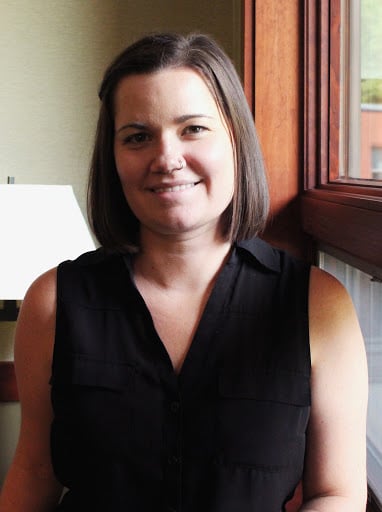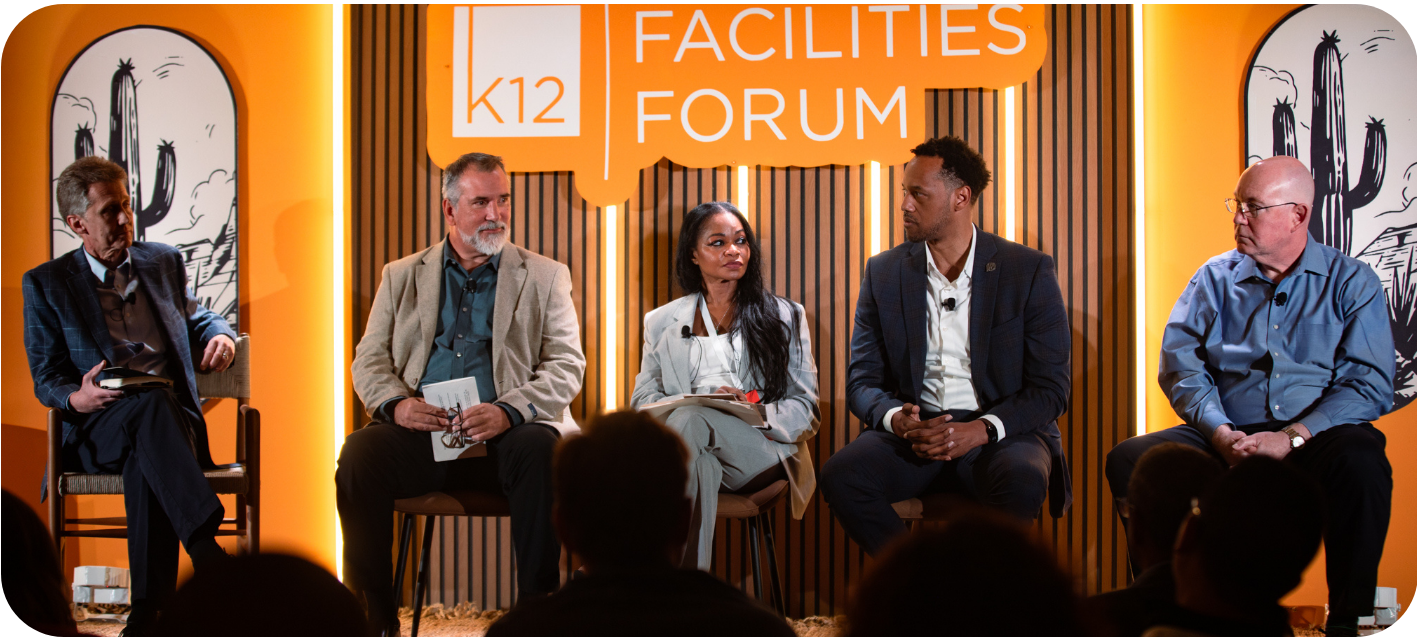Doing more with less. That's school district turnaround expert Paul Vallas' specialty. And why shouldn't it be?
With more than three decades in the business, Vallas has learned a thing or eight about turning around some of the largest and most financially distressed schools in the nation.
From hurricane-ravaged New Orleans to financially unstable Chicago, Vallas has honed his creativity, critical thinking and persuasive skills to transform once floundering school districts into high-performing, state-of-the-art centers for learning.
"My approach is always to identify what the critical components of high-performing schools are and to build a budget and organize the district around them," he said. "The bottomline is that you learn over time a way to address facility issues so you can develop a strategy even in the most trying of circumstances."
Vallas recently described the eight facility-related strategies he always takes into consideration when looking to facilities as a way to financially stabilize a school district during a talk at the K12 Facilities Forum.
"These are things that have consistently proven to be effective for me," he said.
1. Find Existing Talent
When Vallas first enters a school district, he has his eyes peeled for talent that already exists within that system.
"In all districts, even hurricanes destroyed New Orleans, there was always talent I was able to promote and give responsibility to," he said. "That allows us to hit the ground running."
By finding existing talent, Vallas said it decreases any delays in the on-boarding process that would need to take place before any actual work is done.
And, despite the outward appearance of the school district's finances, there are many staff members who want to be a part of change and turning schools around for the betterment of their students and the community.
"Don't be afraid to tap into the talent that is there," he said.
2. Look for Opportunities to Show Sacrifice
Leaders should always look for opportunities that demonstrate their own willingness to make a personal sacrifice.
In Vallas' case, he froze his pay while working for the Chicago Public Schools for six years.
"The point is by doing that and by defending my people and taking responsibility, you develop loyalty," he said. "Look for every opportunity to demonstrate leadership by leading by example."
In the end, Vallas says you'll feel good and you'll be surprised by how much can be accomplished.
3. Long-Term Planning
"There is no substitute for long-term planning, whether that be in facilities or academics," Vallas said. "You assess your resources over an extended period of time and set priorities accordingly."
Year-to-year plans don't get districts out of financial distress. But five-year plans can, if done correctly.
"These five-year plans need to be realistic and practical," he said. "You have to make sure you're placing an emphasis on things like deferred maintenance and that you're making the type of capital investments that will save you money in the long-term."
For example, Vallas said he would always spend the money to renovate 20 schools rather than build one new school.
In Philadelphia, Vallas recalled finding a way to create a $1.7 billion school construction plan by issuing bonds and amortizing interest so that when debt services began to decline the tax rate would stay the same and any new revenues would be used to finance the plan.
"Basically, we had teams that would go from school to school and do complete makeovers," he said. "Every year about 10% to 15% of schools went through the makeover. We were on a four to five year cycle so that we were able to upgrade buildings so there was consistency and continuity."
The makeovers became an event of sorts, with entire communities pitching in to paint murals or rehabilitate park areas.
4. Creative Financing
Not all school district funding has to come from bonds, though. In fact, Vallas noted that looking for non-traditional means can help propel a district forward.
"By partnering with other local governments or community-based organizations, it allows us to tap into perhaps non-traditional spending," he said.
In certain markets, Vallas was able to take advantage of new market tax credits, historic tax credit, and energy conservation grants.
"Those savings can allow you to significantly free up money for renovations and rehab," he said. "We explore every possible way to go out and raise money for capital construction and then work that into our five year plan."
5. Avoid Delays
Delays cost money, Vallas said.
By taking control and accelerating the design and construction process, a district can significantly reduce their change orders and overall construction costs.
"In six years we were able to do new roofs, windows and tuck pointing in 358 buildings," Vallas said. "We were able to do that by pre-designing everything."
While pre-designing meant that most of the schools in the district were identical, Vallas said that's not unusual and the savings far outweighed aesthetic issues.
"Every school looks different, but they aren't," he said. "We saved months in architectural design and by standardizing materials we were able to buy in bulk."
Additionally, Vallas and other school officials looked ahead to pre-qualify contractors so they didn't have to bid every project, creating a prolonged process.
"Every school looks different, but they aren't"
"So we had architects, contractors and subcontractors pre-qualified," he said. "It was all about picking people and for the next six years we picked among them."
In the end, the district was able to build and renovate schools at an accelerated pace with just a 4% average change order, a few notches below the average 6% other districts see.
6. Create Competition
Another way Vallas has realized savings in districts is by creating competition amongst the construction industry.
For instance, he implemented the 50/50/50 plan, where 50% of hired contractors had to go to minority businesses; 50% of the workers had to be minorities; and 50% had to be city residents.
"Over six years, we had $1.74 billion invested in minority contractors and 52% were city residents," he said. "We created such competition that we controlled the cost." That competition not only helped the district, it provided an economic boost in the community.
"Competition is critically important," he said, adding that the district would attend job and vendor fairs to make connections with smaller construction firms to add to their roster of contacts.
7. Monetize Your Facilities
Transforming existing schools from mazes of classrooms and hallways into flexible spaces can allow districts to not only free-up space, but generate funds.
"We shift to multi-purpose facilities that entire communities could use," Vallas said. "They can be community centers, used for conferences or community gatherings. We can monetize these buildings."
In Philadelphia, Vallas took the approach to transform what looked like medieval castles into what he dubbed the convention center building.
"We want really strong interiors but they were flexible," he said. "So the interior walls weren't permanent so they could be reconfigured, because schools are always evolving."
At the same time, Vallas said he ensured buildings were physically secure, environmentally clean and could function as a technology platform.
"So the convention center approach allowed us to build buildings that were less expensive but could evolve," he said. "At the end of the day you want flexibility. There is so much learning that shouldn't be confined to a single place. Traditional classrooms are becoming like prehistoric caves."
8. Make Smart Tech Investments
Rather than shelling out millions of dollars for technology that will be obsolete in just a few years, Vallas shifted districts from buying to leasing when it came to curriculum and technology.
"I can't understate the importance of laying out a financial plan that in effect identifies what the classrooms need to be superior learning environments then entering long-term agreements that allow classrooms to be continually resourced," he said. "So regardless of what is happening on the broader budget spectrum and regardless of financial challenges the district is facing, the sanctity of that classroom is maintained."
In all his years as a turnaround expert, Vallas said he has never bought curriculum.
"I lease them and subscribe to the curriculum so it is constantly being updated," he said. "If you partner with the right companies they will continue to upgrade their product. It's the same with technology, so it's organic and constantly being upgraded so that every three years the classroom gets a makeover and it doesn't increase your cost."
Even the most financially stressed district can seek these agreements, providing stability to the learning environment.
"When you have the right technology plan and strategy it can enhance and support those practices that are critical to high-performing schools," he said.
In the end, Vallas reiterated that creating a budget as a school improvement vehicle is all about thinking long-term.
“My approach has always been to look at budgets in a really organic way,” he said. “To see them as school improvement vehicles. To do my long-term projections on available revenue and I’ve been able to do that successfully. I’ve been able to quietly stabalize these districts’ finances, and academic performance has improved.”

Posted by
Join us at the K12 Facilities Forum!
The community for district and facilities leaders
Nov 8-10, 2026 | San Antonio, TX









-3.png)

Comments